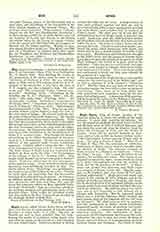

Hug, JOHANN LEONHARD, a German Catholic exegete, b. at Constance, June 1, 1765; d. at Freiburg im Br—March 11, 1846. After finishing his studies at the gymnasium of his native town he went to the University of Freiburg in 1783. He was ordained priest in 1789, and in 1791 became professor of O. T. exegesis in his university; a year later the chair of N. T. exegesis was also assigned to him. His chief works are: “De antiquitate Codicis Vaticani coinmentatio” (Freiburg, 1810); “Einleitung in die Schriften des N. T.” (Stuttgart, 1808-, 4th ed—1847); “Das hohe Lied” (Freiburg, 1818); “De Pentateuchi versione Alexandrine, commentarius (Freiburg, 1818); “Gutachten fiber das Leben Jesu von D. F. Strauss” (Freiburg, 1844); “Erfindung der Buchstabenschrift” (Ulm, 1801). Hug was an independent thinker, a keen student, a man who went to the very roots of things. He entered fearlessly into the camp of the critics of the Semler set. He treated N. T. problems from the historical standpoint. From this their own standpoint he struck hard at the critics. His method was to insist on the truly historical study of the New Testament, and to do away with all subjective criticism; the conjectures that one makes should ever have some foundation in the historical facts of either N. T. or other study. Hug brought his historical criticism to its fullest development in his great work on N. T. introduction. Besides the four German editions of this splendid work various translations appeared. Cellerier edited it under the title: “Essai d sine Introduction Critique au N. T.” (Geneva, 1823). The third edition of Hug’s work was translated into English by Wait under the title: “An Introduction to the writings of the N. T.” (London, 1827). Hug fought single-handed the critics belonging to Semler’s school. Each new edition met the new protagonists of the opposite camp. Every destructive theory and hypothesis were mercilessly attacked by him. The fourth edition of the “Einleitung” was posthumous, but had been got ready by Hug for the press. Therein he made clear his conviction that the destructive criticism of his time had run its course. In Germany no Biblical scholar had more influence in stemming that destructive tide than had Hug. Not only his books but numerous articles by Hug, especially in the Freiburg “Zeitschrift”, kept up a constant attack on the arbitrary methods and questionable tactics of the negative critics. Even today the historical studies that Hug made in the New Testament are of value to the thorough student of Holy Writ.
WALTER DRUM

